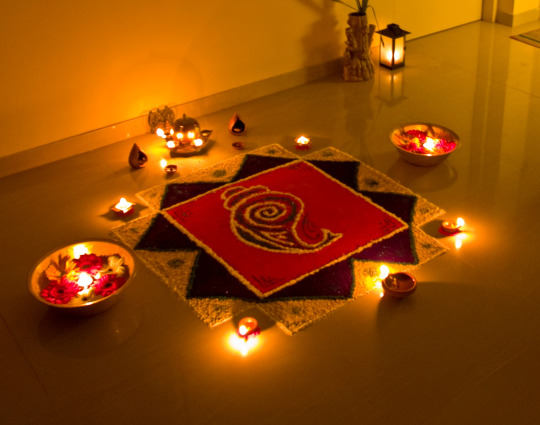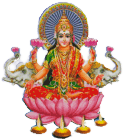
Diwali – The Festival of Light Explained.
Diwali – The Festival of Light Explained by UKBullion:
The festival of Diwali is a major celebration for a large part of the Asian community in the UK who have maintained their culture and traditions whilst living away from their historic homelands. Due to the significant numbers of emigrant populations in countries around the world the celebration of Diwali is not limited only to Asia and as followers of Hinduism and Sikhism combine to total almost 15% of the world’s population, behind only Christianity and Islam in terms of pure numbers many more people are aware of the festival than some of the other festivals which occur in Asia alone.
As mentioned, many of us are aware of the Festival of Diwali but may not know the reasons and meanings behind the festival. This article aims to shed some light on the festival of light and explain its meanings in both a historical and modern context, though it should be said it is by no means a definitive guide to the festival.
What is Diwali?
Diwali is a five day celebration marked by followers of Hinduism, Sikhism and Jainism. It marks the beginning of the Hindu New Year. The name Diwali derives from the Sanskrit word Dipvali which means ‘row of lights’. It is these origins in Sanskrit which lead to its common name of the Festival of Light. The festival itself is spread over five days around the autumn new moon.
The festival of Diwali maintains a fixed position when identified against the Hindu sidereal calendar, which differs from the Gregorian calendar used in the West in that it identifies fixed stars in the night sky on which to base its calendar. Each year stars will appear in the same spot in the sky on the same date in the sidereal calendar and it is on this premise that ancient monuments such as the Pyramids and Stonehenge operate to identify significant times of the year.
The Gregorian calendar is based upon the mathematical construct of the Earth revolving around the sun and differences can occur between the two because of the imperfect nature of the Earth’s orbit when observed in this way.
There is an actual day of Diwali within the overall festival which coincides with the darkest night known as Amavasya when the new moon occurs.
Earthenware lamps called Diyas are used to provide light on this very dark night. The new moon is crucial in determining the positioning of the festival and as mentioned above occurs at the same sidereal date each year. The actual day of Diwali is the third day of the five days of celebrations that take place.
There are many interpretations as to the meaning of Diwali and these differ not just for Hindus and Sikhs but also incorporate local traditions and customs throughout Asia. A common theme however, that runs throughout all of the different celebrations connected with Diwali is the victory of light over dark, or good over evil.
When is the Festival of Light?
As with many festivals that originate from Asia the festival of Diwali has no fixed date each year as is the case with other religious festivals such as Christmas which generally hold a fixed date. The reason for this is due to the astronomical derivation of the calendar used in Asia on which the festival is set. In the West we use the Gregorian calendar which is based upon the mathematical division of the year into the nearly equal parts that we call months.
Many alternative calendars pre date the Gregorian calendar and use instead the observation of astronomical phenomena to decide upon their beginnings and end dates as well as the locations of any festivals within the year. Because of this Diwali can be seen to move around when located in the Gregorian Calendar, however it is static within the lunar calendar on which it is based, this corresponding to the New moon which occurs sometime between the end of October and Beginning of November when viewed in the Gregorian Calendar.
This year’s celebrations start on the 30th October 2016 as with most previous years with last year being the exception starting in November.

The story behind the Festival
There are a number of beliefs associated with Diwali and each different group assigns different significance and mythology to the celebration. The major religions of Hinduism and Sikhism have differing interpretations of the festival despite Sikhism beginning as an offshoot of Hinduism in around the 16th Century.
Even for Hindus there are many regional variations in the celebration of the festival of Diwali. The most famous and widely recognised story of Diwali is that associated with Rama and Sita.
Legend has it that Prince Rama was a great warrior who was supposed to inherit the throne from his father the king. However the king had remarried and his new wife had other plans for the succession of the throne. She tricked the king into banishing his son to live in the forest for fourteen years in the hope that he would not return or that her own heir would have already taken the throne. Prince Rama was joined in his exile by his beautiful wife Sita and they lived together in a simple hut in the forest.
Upon their arrival in the forest the Demon King Ravanna spotted Sita, who was known for her beauty, and decided he would take her for his wife. Ravanna was a hideous demon with ten heads and twenty arms. One day whilst Rama and Sita were walking in the forest they came across a wondrous deer with silver antlers, a golden hide, hooves that were shiny black and eyes as blue as sapphires. Sita asked Rama to catch the deer for her to keep as a pet because of its beauty. This was all part of a plan set in motion by Ravanna to lure Rama away from his wife. Whilst Rama was gone the Demon King swooped down from the sky in his magical chariot and captured Sita. Although Sita was frightened she thought quickly and threw small pieces of her jewellery to the ground to mark her path.
Once Rama had managed to catch the deer he had been stalking for Sita it promptly revealed itself as one of Ravanna’s monsters and flew away revealing the deception. Returning to the hut they shared he found Sita to be missing but quickly spotted the trail of jewellery she had left for him.
On his quest to rescue his wife Rama was joined by the Monkey King Hanuman who agreed that he and his subjects would help find Sita. The trail led to an island surrounded by wild seas which were bridged by constructing a stone causeway to the island. Rama and his army rushed across the new bridge and then followed a long and terrible battle with an army of demons until at last Rama encountered Ravanna. They fought and no matter how many of the demons arms Rama chopped off they re-grew until at last Rama took his bow that had been made by the sky god and shot Ravanna through the heart killing him instantly.
The demons were defeated and Rama and Sita returned to their own country to rule. All the people of the land were joyous in celebration and lit a lamp in their windows to guide the happy couple home where they ruled wisely until it was their time to return to heaven.
Hindus light their homes in celebration of the return of Rama and Sita and now also use the celebration to welcome the Goddess Lakshmi, the Goddess of prosperity and wealth into their homes in the hope that she blesses them with prosperity and wealth for the coming year as Diwali marks the beginning of the New Year in Hindu culture.
For Sikhs Diwali is a celebration of freedom from oppression. It celebrates the release of Guru Hargobind who lived between 1595 and 1644 and was the 6th Guru recognised by Sikhism following the execution of the 5th Guru, his Father, in 1609. Sometime after the execution in 1619, Guru Hargobind along with 52 followers were arrested by the Mugal Emperor Jahangir who felt threatened by their steadfast resolve not to abandon their faith.
Following the public outcry by the Sikh community to the Muslim leader’s decision to execute the 5th Guru the Emperor agreed to release Guru Hargobind. The Guru however refused to leave captivity without his followers. The Emperor agreed to the request however imposed the condition that only those who could hold onto the Guru’s cloak could go free. Guru Hargobind had fifty two strings sewn onto his cloak and was thus able to secure the release of all of his followers. On his release he and his followers returned to the Golden Temple at Amritsar which was lit with Diyas as a celebration and continues to be lit each year to mark the occasion.
There are many more regional variations to the story of Diwali with almost each individual state in India ascribing their own beliefs and mythology onto the framework of the festival of light. Regardless of the protagonists the main theme of the story is the guiding to freedom of the main characters and the victory of good over evil, or light over dark.
Traditional Celebrations
The traditional celebrations for Diwali include the cleaning and decoration of the home and the positioning of Lamps called Diyas whose name is also derived from the original Sanskrit language. Diyas are small clay lamps filled with oil with a cotton wick, today electric lights are also used to light towns throughout the world. The river Ganges sees many Dyias set floating across it. It is thought to be a good omen if the Diya is able to float across and reach the opposite bank.
Many areas of Asia for example still celebrate Diwali in the more traditional sense with the cleaning of the home, decoration with Rangoli art works and the wearing of new clothes whilst giving gifts to your neighbours. Sweets and dried fruit are a traditional gift and important part of the celebrations. Rangoli art is a pattern drawn onto the floor it can be made from coloured rice, flour, sand or flower petals they are meant to bring good luck they are used in many celebrations and each area of India has its own variations and designs they can be elaborate geometric patterns, flower patterns or show impressions of deities.
In addition to the traditional lamps, and tea lights many people now use fireworks to light up the night sky as part of their Diwali celebrations and more modern gifts have replaced those once given. Another tradition has been to give gifts of gold and jewellery in reference to that used to guide Rama’s path to rescue his wife. The value of investments is also linked heavily to the Goddess Lakshmi and many choose this time of year to make investment gifts to friends and family members in order to secure prosperity for the future by gaining the blessing of the Goddess Lakshmi.
In the UK Diwali is an ideal time to consider purchasing Gold or Silver Bullion Bars and Coins or a Silver gift from our extensive Diwali Gifts range.
Be sure to check out the special offers for Diwali on our website at: www.ukbullion.com

+ There are no comments
Add yours